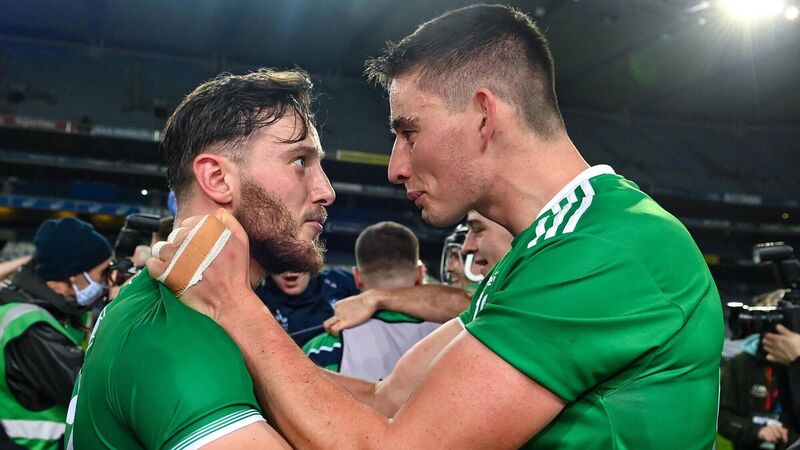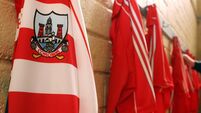Are Limerick part of hurling's aristocracy - and what does that mean?

Tom Morrissey, left, and Gearóid Hegarty of Limerick celebrate following the All-Ireland SHC win last December. Picture: Ramsey Cardy/Sportsfile
When this question landed from the sports desk, I was intrigued. First of all, by the notion of hurling aristocracy — aristocracy itself, come to that — when you consider the imbalance between the number of humble subjects and crowned heads in the hurling world itself.
As in, there are almost as many chiefs as Indians.
I’d almost rephrase it as an inquiry into whether Limerick now have a permanent seat on the hurling version of the UN Security Council — a body on which some members have permanent tenure, while others’ bona fides come and go.
All of which ducks the question, which may be unanswerable in the first place, but something that’s established beyond doubt is Limerick’s current primacy in hurling according to some long-established metrics.
First, they’re becoming too familiar to people.
The outpouring of affection for Limerick which all witnessed, and some participated in, when Tom Condon fielded that last ball in the 2018 All-Ireland final is now well and truly in the rear-view mirror.
Because Limerick have won two of the last three All-Irelands (and would surely have come very close to the one they missed out on if not for a dreadful officiating error), they’ve become a mainstay of previews and reviews, highlights packages and year-end summaries.
The novelty is gone, and the restless consumer always wants something different.
Second, their style of play is under intense scrutiny every time they go out.
Limerick have a team that is physically powerful and which plays to its strengths, something any coach would recognise as the correct approach.
However, many observers now take a great interest in their style of tackling, for instance.
Only last month, Tadhg de Burca of Waterford said: “I know Limerick brought it in a lot over the last three or four years, this tackle that has come into the game.”
To be fair to de Burca, he added: “I wouldn’t really see it as a negative at all” — but not all share his views.
Limerick were heavily penalised early in the league, for instance, and wing-forward Gearoid Hegarty conceded: “Look, you can blame everybody bar yourself, but at the end of the day, we just had to look at ourselves.
“Realistically, the majority of them were frees against us in the first two [league] games.
“So the onus was on us to improve our tackling efficiency, and I think we have done that very well over the last couple of games.”
In their pomp, Kilkenny’s tackling was also the subject of much discussion, so Limerick are certainly in good company.
Third, one player becomes a focal point of attention as embodying the team’s approach.
For instance, Limerick’s rampant wing-back Kyle Hayes figures prominently in an RTÉ ad for the station’s sports coverage, slapping the ball over the bar against Galway, but he’s not the player who has come to embody Limerick.
Wing-forward Hegarty, quoted above, personifies Limerick’s strengths — winning possession, linking the play, striking points from long range. The big attacker is the kind of player any manager would love to have in the dressing-room.
There was also a consensus last season that Hegarty had a lucky escape in the All-Ireland semi-final against Galway when he might have collected a couple of cards.
Hegarty is now the player his own supporters see as typifying Limerick’s virtues, and the player opposing supporters see as typifying the team’s vices, though if the latter is honest, ‘winning All-Irelands’ is the biggest vice there is.
For this viewer, this last is the true marker of the hurling dynasty: The player who encapsulates the team’s approach.
Think of Tommy Walsh of Kilkenny, or Bubbles O’Dwyer of Tipperary.
It’s not the dominant player from start to finish of the team’s reign, but the one whose on-field personality and signature flourishes embody the side — and, in a wider sense, the very ethos and spirit of the county itself.
Think of it as the hurling version of (the state, it is I) if you like.
Thus proving that there is some kind of an aristocracy within the game, even if it’s not necessarily a permanent one.





